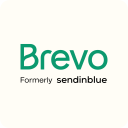GetResponse vs Mailchimp: Choosing the right email marketing service
- 01GetResponse vs Mailchimp: overview
- 02What's the difference between GetResponse and Mailchimp?
- 03GetResponse pros and cons
- 04Mailchimp pros and cons
- 05GetResponse compared to Mailchimp
- 06Mailchimp compared to GetResponse
- 07Features comparison
- 08GetResponse vs Mailchimp: Which is the best for your business?
- 09Promotions on Email Marketing software
- 10Alternatives to GetResponse & Mailchimp
Access up to $712 savings on GetResponse & $1,870 on Mailchimp
Access up to $712 savings on GetResponse & $1,870 on Mailchimp
Effective email marketing is vital to the success of businesses of all sizes. But without a good email marketing platform, it’s easy for campaigns to miss their mark, leading to lower engagement rates and missed opportunities for revenue growth.
Fortunately, there are a variety of email marketing solutions available to help you manage campaigns, automate workflows, and enhance subscriber engagement. In this article, we compare the differences between GetResponse and Mailchimp, two popular email marketing platforms. Read on for our in-depth features comparison that will help you find the tool that best suits your business needs and budget.
GetResponse vs Mailchimp: overview
GetResponse and Mailchimp are two leading email marketing platforms, each with distinct strengths and features that cater to various business needs.
GetResponse is renowned for its robust automation capabilities, allowing users to create complex, triggered campaigns based on subscriber actions. This makes it ideal for businesses looking to implement detailed, behavior-based email strategies. On the other hand, Mailchimp excels in user-friendliness and integration options. It offers an intuitive interface that is easy for beginners to navigate while still providing powerful tools for seasoned marketers.
To decide which platform is the best fit for your specific needs, it’s crucial to compare their differentiating elements in a detailed table, taking into account factors such as automation features, ease of use, design capabilities, reporting and analytics, and integration options.
What's the difference between GetResponse and Mailchimp?
While both GetResponse and Mailchimp offer robust email marketing platforms, they cater to different user needs through distinct features and functionalities.
GetResponse is particularly strong in its automation capabilities. It allows for advanced automation workflows that can be customized extensively based on user actions, making it ideal for marketers who want to create detailed, behavior-driven email sequences. Additionally, GetResponse supports multifaceted marketing strategies by offering tools for webinars, landing pages, and conversion funnels directly within the platform. This integrated approach is aimed at businesses looking to manage multiple aspects of their online marketing from one place.
In contrast, Mailchimp is celebrated for its user-friendly design and broad integration ecosystem. It provides an intuitive experience that is accessible to beginners but also powerful enough for advanced users. Its design flexibility is notable, with a wide variety of templates and a drag-and-drop editor that simplifies the creation of visually appealing emails. Furthermore, Mailchimp offers extensive integration options with other apps and services, which is a significant advantage for businesses that use a variety of tools to manage their operations.
The main difference between GetResponse and Mailchimp lies in their data management and analytical tools. Mailchimp provides more in-depth reporting features that help users track the performance of their campaigns with visual reports on user engagement, sales, and website activity. This makes Mailchimp a good option for those who rely heavily on data-driven decisions.
Another significant difference is in their approach to pricing and scalability. GetResponse offers a more flexible tier system that can be more cost-effective for small to medium-sized businesses that need scaling capabilities. Mailchimp, on the other hand, tends to be more expensive as subscriber lists grow, but it offers a forever free plan for very small lists, which is appealing for startups and small businesses.
GetResponse pros and cons
What are the advantages of GetResponse?
- Advanced automation: GetResponse offers robust automation capabilities that allow users to create complex, personalized workflows based on subscriber behaviors. This can significantly increase engagement and conversion rates.
- All-in-one platform: In addition to email marketing, GetResponse provides tools for creating landing pages, hosting webinars, and building conversion funnels, which are integrated into the same platform for a streamlined experience.
- High deliverability rates: GetResponse has strong email deliverability rates, ensuring that your marketing messages reach the recipients' inboxes more reliably.
- Comprehensive integration options: The platform integrates with various third-party applications, including e-commerce platforms, CRM software, and social media tools, which enhances its functionality and flexibility.
- A/B testing and analytics: GetResponse offers detailed analytics and A/B testing tools, allowing marketers to test different aspects of their campaigns and make data-driven decisions to optimize performance.
What are the disadvantages of GetResponse?
- Learning curve: Some users find the platform's wide array of features somewhat overwhelming, particularly those new to email marketing, which can lead to a steeper learning curve.
- Pricing structure: While GetResponse offers a flexible tiered pricing system, the costs can escalate quickly as you add more subscribers and advanced features, which might not be cost-effective for very small businesses or those with tight budgets.
- Limited free plan: Unlike some competitors, GetResponse does not offer a "forever free" plan. Their 30-day free trial may be insufficient for some users to fully test and evaluate the platform.
- Template designs: Some users have reported that the design and customization options for email templates are not as modern or extensive as those offered by some competitors.
- Customer support: Although GetResponse generally provides good customer support, there have been user reports of delays in response times, especially during peak hours or for less urgent queries.
Compare GetResponse to other tools
Mailchimp pros and cons
What are the advantages of Mailchimp?
- User-friendly interface: Mailchimp is well-regarded for its clean, intuitive interface that makes it easy for beginners to navigate and use effectively, even without prior experience in email marketing.
- Free plan available: Mailchimp offers a "Forever Free" plan, which is ideal for small businesses or startups just beginning with email marketing. This plan allows users to send up to 10,000 emails per month to up to 2,000 subscribers.
- Robust integration capabilities: Mailchimp integrates with a vast array of services and platforms, including major e-commerce and social media platforms, CRM systems, and other marketing tools, enhancing its functionality and versatility.
- Comprehensive reporting and analytics: Users can access detailed reports and analytics, including open rates, click rates, and subscriber activity, which are crucial for optimizing campaigns and understanding audience behavior.
- Advanced segmentation and personalization: Mailchimp offers advanced list segmentation and personalization options, allowing users to target specific segments of their audience with tailored messages, which can lead to better engagement rates.
What are the disadvantages of Mailchimp?
- Costly for large lists: While Mailchimp’s free plan is generous, the pricing can become quite steep as your list grows and you need more advanced features, which may not be cost-effective for all businesses.
- Limited automation in lower tiers: The automation features in Mailchimp are somewhat limited on lower-tier plans compared to some competitors who offer more advanced automation tools at similar price points.
- Template limitations: Some users find the design options for templates less flexible than those of competitors, with customization sometimes requiring HTML knowledge to achieve the desired look.
- Overwhelming feature set for some: New users may find the wide range of features and settings overwhelming, leading to a steeper learning curve, especially for those who are new to email marketing platforms.
- Support limitations: Customer support access can be limited depending on your subscription plan. Users on the free or lower-tier plans have reported slower response times and limited support options.
Compare Mailchimp to other tools
GetResponse compared to Mailchimp
GetResponse and Mailchimp serve as two prominent players in the email marketing sphere, each with distinct advantages. GetResponse shines with its advanced automation capabilities and integrated tools for webinars and landing pages, making it a comprehensive marketing suite. It's particularly favored by those who need complex, behavior-driven communication sequences.
Mailchimp, on the other hand, excels with its user-friendly interface and robust integration ecosystem, appealing to beginners and small businesses with its generous free plan. While Mailchimp offers superior template customization and analytics, GetResponse provides more in-depth marketing automation tools, making it ideal for users seeking intricate campaign functionalities.
Is GetResponse better than Mailchimp?
Deciding whether GetResponse is better than Mailchimp ultimately hinges on specific marketing needs and preferences. GetResponse is ideally suited for marketers focused on creating highly targeted, automated campaigns that nurture leads across various stages of the customer lifecycle. Its ability to integrate multiple marketing functions into one platform, like email campaigns coupled with webinars, offers a seamless experience for more complex marketing strategies.
Conversely, Mailchimp’s strengths in ease of use, extensive template options, and strong analytics make it a top choice for those prioritizing straightforward campaign management and insights, especially beneficial for small businesses or those just venturing into email marketing.
What is GetResponse best used for?
GetResponse is best utilized for its comprehensive email marketing capabilities, particularly excelling in automation and conversion-focused tools. It offers users an integrated approach to managing online marketing campaigns, featuring advanced autoresponders, detailed segmentation, and behavior-based emailing.
Beyond basic email setups, GetResponse supports the creation of webinars, landing pages, and automated sales funnels, making it a robust choice for marketers looking to drive conversions and enhance subscriber engagement through multiple channels. Its functionality is especially beneficial for businesses aiming to implement complex marketing strategies that require meticulous customization and tracking, thereby optimizing their interactions with customers across various stages of the sales cycle.
Can GetResponse replace Mailchimp?
GetResponse can replace Mailchimp for many users, particularly those seeking more advanced automation and comprehensive marketing tools within a single platform. It excels in areas like behavior-based email sequences, sales funnels, and integrated webinar capabilities, offering a depth of marketing automation that goes beyond Mailchimp’s core offerings.
For businesses focused on detailed, dynamic customer journeys and conversions, GetResponse provides a robust alternative. However, Mailchimp's user-friendly interface and extensive integration options may still make it the preferred choice for those prioritizing ease of use and broad compatibility with other software.
Is GetResponse cheaper than Mailchimp?
Comparing the pricing of GetResponse with Mailchimp, GetResponse often emerges as the more budget-friendly option, especially for mid to large-sized subscriber lists and those who require advanced automation tools. Mailchimp's pricing can escalate significantly as the number of subscribers increases and additional features are utilized.
While Mailchimp offers a free tier, which is ideal for very small businesses or those just starting out, GetResponse provides more comprehensive functionalities at lower tier prices. This makes GetResponse a cost-effective choice for businesses looking to scale their email marketing efforts without a steep increase in costs, unlike Mailchimp, which can become pricey as demands grow.
Is there a better Email Marketing software than GetResponse?
In the world of email marketing platforms, GetResponse stands out with its robust automation and integrated marketing tools. Yet, the landscape is filled with notable alternatives like Mailchimp, Constant Contact, AWeber, and ActiveCampaign, each presenting its own set of distinctive strengths and capabilities.
Alternatives to GetResponse often excel in areas such as user interface design, integration options, and specific features like transactional emails or advanced CRM functionalities, catering to diverse marketing needs. Determining a "better" software than GetResponse depends greatly on individual business requirements, the scale of email campaigns, and the particular set of features that best align with your strategic objectives.
Additional 15% off on all purchases on GetResponse
Get Additional 15% off on all purchases on GetResponse and up to $712 savings with Secret.
Mailchimp compared to GetResponse
Mailchimp and GetResponse are both influential in the email marketing domain, yet they cater to different preferences and needs. Mailchimp is highly favored for its intuitive design and user-friendliness, making it ideal for beginners or small businesses looking to launch straightforward campaigns. It also boasts a comprehensive free plan, broad integration capabilities, and extensive template options, enhancing its appeal for creative projects.
Conversely, GetResponse is more suited to marketers who require sophisticated automation tools and multi-functional campaigns, including webinars and advanced analytics. It offers a more seamless approach to intricate marketing strategies, supporting higher conversion rates through targeted, behavior-driven communications.
Is Mailchimp better than GetResponse?
Whether Mailchimp is better than GetResponse depends largely on the user’s objectives and the complexity of their marketing needs. For those valuing simplicity and quick campaign setup, Mailchimp stands out with its highly intuitive platform that streamlines the creation and execution of email campaigns. Its substantial free plan is particularly attractive for startups and small enterprises that are budget-conscious but still desire effective outreach. A
dditionally, Mailchimp's superior template design capabilities and its ability to integrate smoothly with a plethora of other services enhance its utility for businesses that rely heavily on multi-channel marketing strategies to reach a broader audience. This makes Mailchimp an excellent choice for users who need a straightforward, flexible solution without the necessity for advanced marketing automation features.
What is Mailchimp best used for?
Mailchimp is best used for small to medium-sized businesses seeking an easy-to-use platform for their email marketing needs. It excels in creating and managing email campaigns with a user-friendly interface that simplifies the process of designing emails, managing subscriber lists, and analyzing campaign results.
Mailchimp's strength lies in its extensive range of templates, drag-and-drop editor, and diverse integration options, making it highly adaptable to various digital marketing tools and services. It's also ideal for those starting out, thanks to its generous free tier, which provides essential features to engage audiences without upfront investment, making digital marketing accessible to everyone.
Can Mailchimp replace GetResponse?
Mailchimp can replace GetResponse for users whose primary focus is on simplicity and ease of use in email marketing. It is particularly well-suited for small businesses or those new to email marketing due to its intuitive design and generous free plan. Mailchimp provides ample templates, straightforward campaign management, and excellent integration options, making it ideal for straightforward email campaigns.
However, for businesses requiring detailed automation and integrated marketing functionalities like webinars or advanced segmentation, GetResponse might be the better fit.
Is Mailchimp cheaper than GetResponse?
Mailchimp can be cheaper than GetResponse, particularly for those just starting out or operating small to medium-sized subscriber lists, thanks to its free plan which supports up to 500 contacts and 1,000 emails per month without any cost. However, as businesses grow and require more sophisticated features, Mailchimp's pricing can escalate quickly, especially if advanced automation, additional users, or enhanced analytical tools are needed.
Comparatively, GetResponse’s pricing may offer more value in its mid to higher tier plans, which include comprehensive automation and integration capabilities for a comparable or sometimes lower price than Mailchimp’s equivalent tiers.
Is there a better Email Marketing software than Mailchimp?
There are numerous email marketing tools available, but whether they are considered 'better' than Mailchimp depends on individual business needs and preferences.
For example, platforms like GetResponse, Brevo, Klaviyo, and EngageBay excel in areas such as automation, integration with other marketing tools, and customer segmentation capabilities, making them suitable alternatives to Mailchimp. However, they might not match Mailchimp's ease of use and extensive template library, which are key attractions for many users.
50% off the Standard plan for 6 months on Mailchimp
Get 50% off the Standard plan for 6 months on Mailchimp and up to $1,870 savings with Secret.
Features comparison
GetResponse Outperforms Mailchimp in Targeted Contact List Management
Effective management of contact lists is crucial in email marketing to ensure messages reach the right audience segments. While both Mailchimp and GetResponse offer customer segmentation, GetResponse takes a more advanced approach with its list management tools. It allows users to segment their lists not only based on demographic data but also on user behavior and preferences, such as past purchases, site interactions, and email engagement. This behavior-based segmentation ensures that email campaigns are highly targeted and relevant, potentially increasing conversion rates.
In comparison, Mailchimp's segmentation is robust but tends to focus more on broader demographic and location data. GetResponse's detailed approach enables marketers to craft personalized campaigns that resonate more effectively with individual recipients, making it a superior choice for businesses that prioritize precision in their marketing efforts.
Mailchimp Leads GetResponse in User-Friendliness and Ease of Use
In terms of usability, both GetResponse and Mailchimp are recognized for their user-friendly interfaces, designed to facilitate ease of use for marketers of all skill levels. However, Mailchimp pulls ahead significantly in terms of usability, primarily due to its simpler and more intuitive design. Mailchimp's dashboard and tools are streamlined and easy to navigate, making the setup and management of email campaigns accessible to beginners.
For example, its drag-and-drop email builder allows users to quickly create visually appealing emails without needing advanced technical skills. In contrast, while GetResponse offers a robust set of features like automation workflows and conversion funnels, its interface can be slightly more complex and may require a steeper learning curve, especially for those new to email marketing.
GetResponse Enhances Digital Marketing with Integrated Webinar Capabilities
Both GetResponse and Mailchimp are equipped with a plethora of features designed to bolster digital marketing efforts, but GetResponse sets itself apart by offering the unique ability to host webinars directly through its platform. This integration is particularly beneficial for businesses that rely on webinars as a core part of their marketing and customer engagement strategies. For example, GetResponse users can not only host live webinars but also use the platform's email marketing and automation tools to send invites, follow-up emails, and engage participants before and after the event. This seamless integration creates a unified user experience that enhances customer interaction and lead conversion.
In contrast, Mailchimp users must integrate with third-party webinar services, which can complicate the user experience and data management. By offering webinars in addition to advanced email solutions, GetResponse provides a more comprehensive and streamlined service, making it a more versatile choice for businesses looking to manage multiple aspects of their marketing from a single platform.
Mailchimp Provides Superior Analytics for Comprehensive Campaign Insight
Both GetResponse and Mailchimp equip businesses with crucial analytic and reporting capabilities, key to refining email marketing strategies. However, Mailchimp excels with its advanced reporting features, offering a more granular look into the effectiveness of campaigns. Beyond tracking standard metrics like click and open rates, Mailchimp's analytics extend to measuring revenue directly generated from email campaigns. This is particularly valuable for e-commerce businesses as it allows them to see not just engagement but also the actual financial return on their email marketing investment. For instance, Mailchimp integrates with e-commerce platforms to attribute sales to specific campaigns, enabling users to adjust tactics based on what's driving revenue.
In comparison, while GetResponse offers robust reporting tools, its financial tracking capabilities are not as deeply integrated, focusing more on engagement metrics and less on direct revenue attribution. This distinction makes Mailchimp a more appealing option for marketers who prioritize comprehensive insights into both campaign performance and financial outcomes.
Both GetResponse and Mailchimp Facilitate Effortless Email Design with Advanced Tools
GetResponse and Mailchimp both provide potent email design tools that cater to the needs of modern marketers aiming to craft professional and engaging emails efficiently. GetResponse offers a variety of customizable templates alongside a user-friendly drag-and-drop editor, which allows users to easily assemble visually appealing emails tailored to specific campaign goals. This flexibility is ideal for businesses that require rapid deployment of tailored email content.
On the other hand, Mailchimp elevates the design process through the use of artificial intelligence, which assists in creating cohesive multi-channel designs. This AI-driven approach not only simplifies the design process but also ensures consistency across different marketing channels, such as social media and advertisements, enhancing overall brand presence. Both platforms empower users to produce high-quality emails with minimal design expertise, yet Mailchimp's integration of AI provides an additional layer of support in optimizing the aesthetic and functional aspects of email campaigns.
Mailchimp Offers More Extensive A/B Testing Options Than GetResponse
While both GetResponse and Mailchimp include A/B testing capabilities, which are crucial for optimizing email campaigns, Mailchimp offers a more robust and flexible system. This system allows marketers to experiment with various elements of their email campaigns, including subject lines, content, sender details, and send times. This variety enables businesses to fine-tune nearly every aspect of their emails based on real user data, ensuring maximum engagement.
In contrast, GetResponse's A/B testing is primarily focused on landing page designs, limiting tests to the visual and functional elements of a single campaign facet. Consequently, Mailchimp provides marketers with a broader and more comprehensive understanding of what drives success in their campaigns, making it possible to tailor communications more effectively to meet audience preferences. This extensive testing capability makes Mailchimp particularly valuable for businesses looking to deeply understand and improve their email marketing impact.
Mailchimp Surpasses GetResponse in Integration Capabilities
When weighing the integration opportunities, both GetResponse and Mailchimp present strong capabilities, each catering to different aspects of digital marketing needs. However, Mailchimp once again takes the lead, offering a wider array of integration options with other software. Mailchimp's extensive partnership ecosystem includes integrations with popular e-commerce platforms like Shopify and WooCommerce, CRM systems such as Salesforce, and various other tools like Zapier, which enables users to automate workflows across multiple applications seamlessly. For instance, users can sync their customer data from an e-commerce site directly into Mailchimp to personalize and target their marketing campaigns more effectively.
In contrast, GetResponse also offers integrations but tends to focus more on direct marketing tools and fewer third-party integrations, which might limit users looking to connect a broad range of applications.
Subscribe to our newsletters.
No FOMO here. Stay up-to-date on all the latest deals and news with our monthly newsletter straight to your inbox like 125,000+ entrepreneurs (+ Get 10% off on on our Premium Membership!)
GetResponse vs Mailchimp: Which is the best for your business?
GetResponse is the best tool for you if:
- You need advanced automation capabilities that allow for complex, behavior-driven email sequences tailored to each step of your customer’s journey.
- You're looking for an all-in-one platform that includes webinars, landing pages, and autoresponder functionality alongside traditional email marketing tools.
- You value detailed analytics and want to track the effectiveness of your campaigns with precise metrics, helping you optimize your strategies in real time.
- You require integration with a variety of third-party tools, allowing you to seamlessly connect your email marketing efforts with other parts of your business infrastructure.
- You prefer a tiered pricing structure that allows you to scale your email marketing operations without a significant upfront investment, adapting as your business grows.
Mailchimp is the best tool for you if:
- You are just starting out with email marketing and need a user-friendly platform with an intuitive interface that simplifies the creation and management of campaigns.
- You appreciate having a wide variety of professionally designed templates and an AI-powered design assistant to help you create engaging, visually appealing email content.
- You require extensive integration options with other tools like CRM systems, e-commerce platforms, and social media to create a cohesive digital marketing ecosystem.
- You benefit from a robust free plan that supports up to 2,000 subscribers and 10,000 emails per month, making it cost-effective for small businesses or startups.
- You value detailed reporting and advanced analytics capabilities that not only track standard metrics but also measure direct revenue impacts from your campaigns.
Alternatives to GetResponse & Mailchimp
Promotions on Email Marketing software
Start saving on the best SaaS with Secret.
Secret has already helped tens of thousands of startups save millions on the best SaaS like GetResponse, Mailchimp & many more. Join Secret now to buy software the smart way.


















